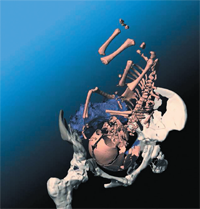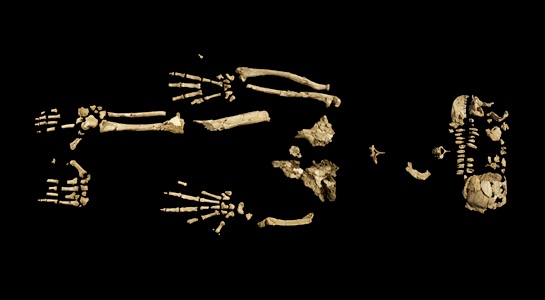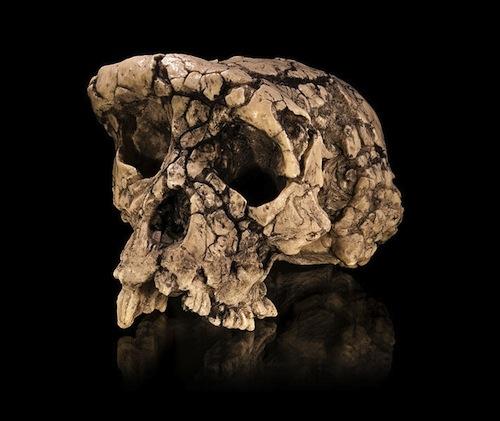 It has already been demonstrated numerous times that 3D printing replicas of delicate or rare artifacts and fossils is an excellent way of sharing them with students and conveying the sum of human knowledge about them in a more concrete, tactile way. What is less often realized is that there is new knowledge being created as a result of these digital models and 3D prints. Capturing the data from a particular site or set of artifacts means that the data is quickly and easily portable. It can be sent from researcher to researcher and be studied closely by many more minds at the same time.
It has already been demonstrated numerous times that 3D printing replicas of delicate or rare artifacts and fossils is an excellent way of sharing them with students and conveying the sum of human knowledge about them in a more concrete, tactile way. What is less often realized is that there is new knowledge being created as a result of these digital models and 3D prints. Capturing the data from a particular site or set of artifacts means that the data is quickly and easily portable. It can be sent from researcher to researcher and be studied closely by many more minds at the same time.
Researchers in paleoanthropology working in the Stony Brook University Department of Anatomical Sciences immediately recognized the benefits that 3D printing’s reproductive capabilities provided to their study. An interest in studying the bones of a human ancestor, such as Lucy, who lived sometime between 2.9 and 3.9 million years ago can’t be fully satisfied when the bones are so few and handling them such a delicate process that naturally must be limited for their preservation.
And what happens when scientists in Cairo and California are working to understand their own discoveries in the context of those bones? Traditionally, they have relied upon models made by casting, first out of plastic and then later out of rubber or silicone. However, when a fine level of detail is needed those molds often fall short because of bubbles or other imperfections in the materials. In addition, the risk of damaging the artifact during the mold making process is a very real, and devastating, danger.
With 3D technology, incredibly detailed replicas of the artifacts can be created with a minimal amount of handling of the original. In addition, the preparation for print produces digital 3D models that can easily be replicated and sent wherever needed as many times as needed, creating an unlimited supply of high quality, extremely precise models for study. It was just this access that allowed Stony Brook’s paleoanthropologists to compare a femur from a fossil named Orrorin, believed to be one of the earliest hominins, dating back approximately 6 million years, to a femur from Lucy in order to determine that while Orrorin most likely walked on two feet s/he also probably lived in trees.
The prevalence of this technology is making the dream of unlimited access to models come closer to reality with every passing day. And it’s not just about precision. Anthropologists from the Max Planck Institute for Evolutionary Anthropology are digitizing the hominin fossils in their collection using CT machines that produce a resolution as fine as .8 micrometers. This kind of scale facilitates close study otherwise inaccessible through traditional model making, and the scanning technology itself allows for non-invasive examination of important aspects of the fossils such as tooth enamel and ear cavities.
The ability to manipulate the digital images and physical models has even allowed researchers from Zurich University’s Anthropological Institute to embed a model of a Neanderthal infant into the model of the pelvis of a Neanderthal woman in order to gain new insights into Neanderthal gestation and childbirth. Professor Christoph Zollikofer is intimately involved in the scanning and printing process and described the importance it holds for the study:
“It is simply not possible to mould a brittle fossil skull. The part is too valuable. But using scanning technology, the replica can be used for silicon molding. Objet’s high accuracy and fine details makes for a perfect copy of the original. This in turn allows experiments to be performed that would otherwise be impossible.”
The world of possibilities opened through these technologies ranges from pushing the boundaries of new inventions all the way back in time to a better understanding of our ancestors from 6 million years in the past. It is an exciting time to be able to push in both directions at once and who knows how far back we will eventually be able to study, all while creating the next frontier for advancing modern technology.
Tell us what you think about this innovative use of cutting-edge technology to learn about ancient history in the 3D Scanning and Printing to Study Evolution forum thread over at 3DPB.com.
[Source: embodi3d.com]Subscribe to Our Email Newsletter
Stay up-to-date on all the latest news from the 3D printing industry and receive information and offers from third party vendors.
You May Also Like
Gorilla Sports GE’s First 3D Printed Titanium Cast
How do you help a gorilla with a broken arm? Sounds like the start of a bad joke a zookeeper might tell, but it’s an actual dilemma recently faced by...
Nylon 3D Printed Parts Made More Functional with Coatings & Colors
Parts 3D printed from polyamide (PA, Nylon) 12 using powder bed fusion (PBF) are a mainstay in the additive manufacturing (AM) industry. While post-finishing processes have improved the porosity of...
$25M to Back Sintavia’s Largest Expansion of Metal 3D Printing Capacity Since 2019
Sintavia, the digital manufacturing company specializing in mission-critical parts for strategic sectors, announced a $25 million investment to increase its production capacity, the largest expansion to its operations since 2019....
Velo3D Initiates Public Offering in a Bid to Strengthen Financial Foundations and Drive Future Growth
Velo3D (NYSE: VLD) has been among a number of publicly traded 3D printing firms that have attempted to weather the current macroeconomic climate. After posting a challenging financial report for 2023,...


































